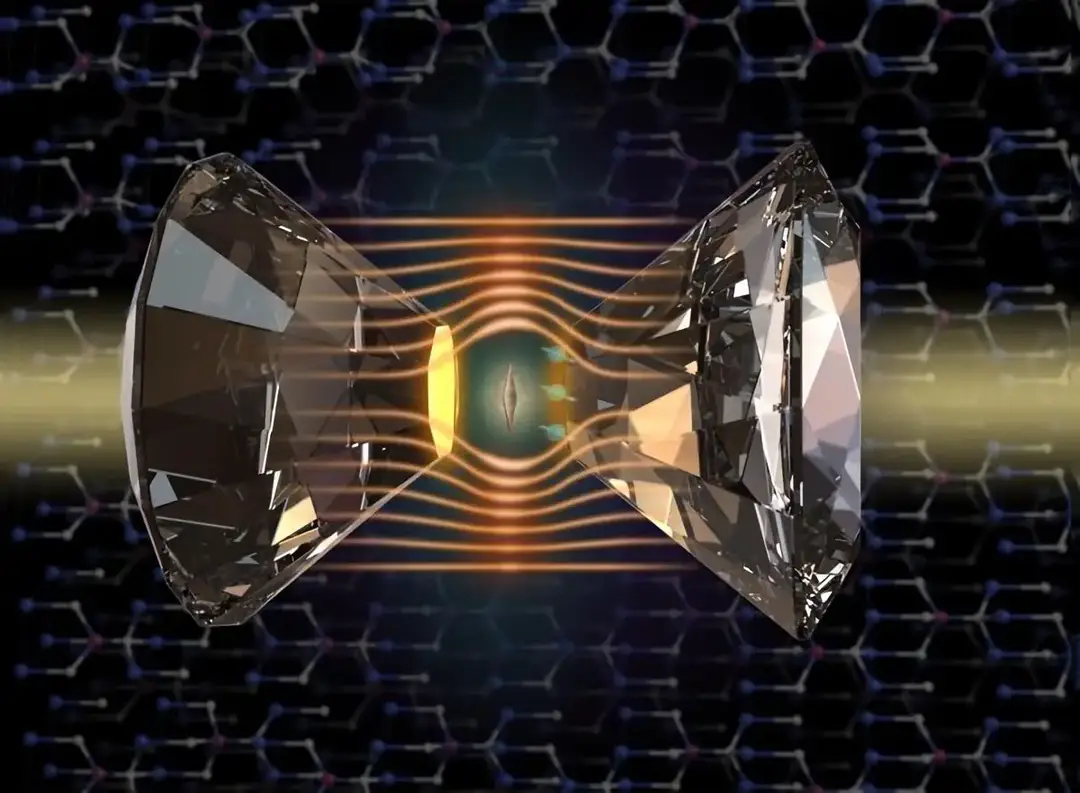New superconductors and ultrapowerful magnetic fields can make it possible to create synthetic Helium 3. And that would be the breakthrough in fusion fuel.
The new quantum lasers can make it possible to turn Tritium into Helium 3. In that model, the laser will split one neutron in the Tritium's nucleus. That thing turns a neutron into one electron and one proton. And if that electron's trajectory can stabilize. That thing makes it possible to create synthetic Helium 3.
The new high-pressure superconducting silicon carbide can be the next-generation tool for micro-fusion tests.
The superconductor is created by using two artificial diamonds that look a little bit like the Apollo crew capsule. The bite of the material taken between those crystals. And then the system creates enough pressure that it turns superconducting. This kind of super-strong magnetic system can use in fusion ignition systems.
Normally, the fusion system is planned to use Deuterium and Tritium. Tritium is the hydrogen isotope where are two neutrons and one proton. Tritium is a short-living isotope. And that's why Helium 3 is more suitable for fusion systems. There are two protons and one neutron in Helium 3, but that isotope is very uncommon. There is a possibility that Helium 3 can take from Moon.
"A joint research team has created a platform to investigate superconducting magnetic detection and magnetic phase transitions in hydrides under high pressure. Credit: HFIPS" (ScitechDaily.com/Chinese Breakthrough in High-Pressure Superconducting Magnetic Detection)
Quantum laser. "Artist’s impression of how photons bound together after interaction with artificial atom. Credit: The University of Basel" (ScitechDalily.com/Unprecedented Breakthrough in Manipulating “Quantum Light)
"Project Daedalus" (Wikipedia/Project Daedalus)
But there is another version of how to get Helium 3. There is the possibility that Tritium can transform into Helium 3 by splitting another neutron in the Tritium. If there is a system that can split another neutron from the Tritium's nucleus that thing splits neutron to proton and electron. So the new type of quantum lasers can make it possible to make that thing real.
The magnet pulls ions or plasma to its shell, and then the ignition laser gives energy impact to that extremely high-power magnet that flows between those diamond electrons. The system can use to create the Helium 3 pellets that are driven to the fusion reactor. Those pellets can use to create enough energy along with the lasers and microwaves that it can start fusion. So in this case the Helium 3 pellet acts as the spark plug.
But in some theories, the Helium 3 pellets can use as fuel in rocket engines. In those theoretical fusion systems, Helium 3 will use along with lithium in the very advanced fusion systems.
The British interplanetary society created the idea for that kind of pulsing fusion engine for the theoretical Daedalus spacecraft in the 1970s. The realistic version of the Daedalus system could travel in the entire solar system, but the stars are a little bit too far away.
https://scitechdaily.com/chinese-breakthrough-in-high-pressure-superconducting-magnetic-detection/
https://scitechdaily.com/unprecedented-breakthrough-in-manipulating-quantum-light/
https://en.wikipedia.org/wiki/Deuterium
https://en.wikipedia.org/wiki/Helium-3
https://en.wikipedia.org/wiki/Neutron
https://en.wikipedia.org/wiki/Project_Daedalus
https://en.wikipedia.org/wiki/Thermonuclear_weapon
https://en.wikipedia.org/wiki/Tritium







No comments:
Post a Comment
Note: Only a member of this blog may post a comment.